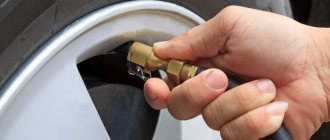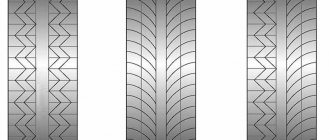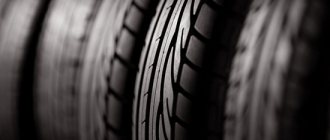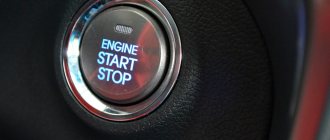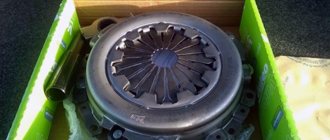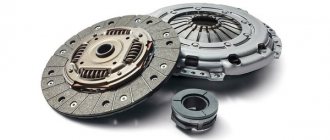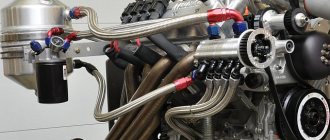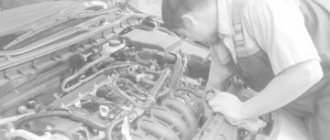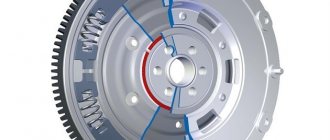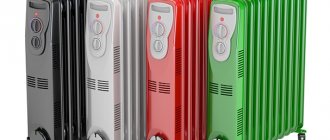Every year, tubeless tires are becoming more and more popular in the automotive market. Unlike tube tires, they are a single multi-layer system that ensures tightness and safety while driving.
When choosing tires, you need to pay attention to sizes, load and speed indexes, season, tread pattern and manufacturer.
How tubeless tires came to be
The first version of tubeless tires was patented back in 1903. The prototype was developed by engineers from Goodyear, which today is one of the leaders in the tire market. However, at the beginning of the 20th century. the invention was considered more dangerous and less effective than the tube wheels, which were released in 1911.
Tires without a tube gained popularity only after the war, in 1954.
The first production car to be equipped with such tires was Packard. Despite the periodic release of these products, they entered the market commercially only in the 80s. This was due to improved design and increased safety of multi-ply tires.
Over the course of several decades, tubeless wheels have become a leader in the market. In the retail segment, they are chosen by 85-97% of consumers.
FRAMEWORK
TEXTILE or COMBINED tires are tires with a textile frame consisting of five or more layers of rubberized nylon or nylon cord and a breaker made of metal threads. The combination of a carcass with a meridional arrangement of cord threads and a belt in radial tires increases performance characteristics in comparison with diagonal tires. Michelin was the first to use metal cord in the carcass of radial textile tires back in the late 40s of the last century, which significantly improved performance characteristics due to its high tensile rigidity, endurance and thermal conductivity.
However, even in those years, the truck combined radial tire with a textile frame ceased to meet the growing demands of motorists for reliability, safety and maximum speed, especially in conditions of long-term non-stop driving.
CMK or ALL STEEL – all-metal cord tires are tires in which the frame consists entirely of steel threads, without the use of textile materials;
- Thanks to the “all-metal cord” design, these tires received higher performance qualities, as well as the possibility of repeated tread renovation, by “cutting” or “welding”.
- Additional components are added to the rubber mixture of such tires, which provide the possibility of long-term non-stop operation of the vehicle, which is also important for freight transportation. These components reduce overheating of the tire while driving.
- The downside of this technology is that the cost of solid metal tires is higher than that of tires made using classical technology. This is because solid steel tires are more difficult to manufacture. But this difference is compensated by a longer service life, fuel economy, load capacity and other advantages.
- If the mileage of a conventional “combined” tire rarely exceeds 100,000 km, then an all-metal tire, depending on the technological features, brand and cost of the tire, can travel more than 500,000 km.
- In developed countries, solid steel tires have been produced since the early 80s of the last century and have gained popularity due to their undeniable advantages in comparison with combined tires;
- In Russia, to this day, many manufacturers equip their vehicles with combined tires, this is due to the effect of old standards for packaging, and the fact that automakers, first of all, produce cars, and it is important for them to make the final product as cheap as possible, and the interests of the consumer fade into the background .
- By moving away from using “combined tires”, in favor of all-in-one tubeless tires, the consumer receives:
UNCONDIBLE ADVANTAGES
- Modernity;
- Metal carcass;
- Increased mileage;
- Increased mileage from 180,000 km;
- Increased load capacity;
- Fuel savings by 15%;
- Pressure stability;
- Reduced deformation;
- Better self-cleaning properties of the tread;
- Reduced rolling resistance;
- Reduced heat generation;
- High speed resistance;
- Possibility before cutting the tread;
- Possibility of retreading;
Tire device
A tubeless tire consists of 1 composite tire. Its strength and tightness is ensured by rubber, textile and metal layers.
Difference from tube tires
The tube tire is designed as follows:
- The outer rubber layer is in contact with the road and has a tread. Due to its high wear resistance, it prevents abrasion and protects the internal cavity from damage.
- The chamber is a hollow closed loop that is inflated with air and ensures the rolling of the car. A loose fit of the inner part to the tire provokes friction and heating inside the wheel. In this case, the main load from the gas pressure falls on the material of the chamber, since the contact of the circuit and the tire is uneven.
Tubeless products are one complete system.
The role of the internal contour is performed by a sealing layer, which is welded to the rubber during vulcanization.
An elastic chamber 2 mm thick reliably holds air, because... completely adheres to the durable outer layers.
Design Features
Tires without a tube consist of several layers:
- Protector. The massive outer layer is made of high-strength rubber and has a relief pattern of grooves and protrusions. The tread is in direct contact with the road and provides traction to the wheel.
- Breaker (bandage). This part is intermediate between the cord and the rubber. It absorbs the load, improves the connection between the carcass and the tread and prevents the latter from peeling off. The bandage consists of rubberized frame threads that intersect with each other. The properties of the breaker depend on the type of cord. With a radial arrangement of threads it is rigid, and with a diagonal arrangement it is softer and capable of stretching.
- Metal or textile base. The cord is made of steel wire, natural or synthetic fiber, which is rubberized for elasticity. The frame, which bears the main load during movement, consists of several interwoven layers of cord.
- Side rings and tape. The connection between the tire and the wheel rim is sealed by a woven rubber wire wrapped in a rubber filler cord. The bead is protected from abrasion on the disc by cord tapes or rubberized textile tapes. Between the side track and the side there is a sidewall and a shoulder area. They absorb lateral loads, preventing the rubber from peeling off. In addition, all symbols and markings are applied to the sidewall.
- Inner layer. The elastic rubber part ensures the tire's tightness during a puncture. Its thickness is only 2-3 mm. When punctured, the soft rubber stretches and envelops the sharp object. Remaining inside the wheel, the tip partially seals the damage.
How to identify a tubeless tire yourself
Recommendations on how to identify a tubeless tire:
- By marking. The simplest sign by which you can distinguish the 2 types of tires is the designation on the sidewall. If there is a tube inside the tire, the rubber is marked “Tube type” (TT), and if there is no tube – “Tubeless” (TL).
- According to the shape of the valve. The nipple on a tube tire is long and smooth. It is independent of the tread, so when you press on the spool on a flat tire, it easily falls inward. In a tubeless design, the valve is integral with the wheel. The nipple on it is short and has a small side. There is a reinforced rubber belt around it that prevents indentation.
The main reasons for loss of pressure in a tubeless wheel when there is no damage to the tire
In such cases, the defect may lie in the following situations, which you must pay attention to:
- Tubeless tire goes flat - what to do? The first thing that needs to be checked is the condition of the nipple valve, since it can fail due to high pressure inside the wheel, as well as under aggressive environmental influences. The rubber on it often becomes tanned, dries out and cracks, which ensures depressurization of the entire system. In such cases, the car enthusiast only needs to replace the nipple and continue driving.
- The nipple itself is attached directly to the rim from the inside in such a way that its sole is pressed against the wheel, and this compression only intensifies under pressure. The metal part - the nipple sticks out for easy control of pressure and inflation of the tire. So, this fastener can break or become depressurized, for example, from poor-quality glue, and the nipple also requires replacement.
- Since the tire only fits tightly to the side of the rim of the disc, without providing any adhesion, it is held there due to the rigidity of the cord. If there are any jams or defects on the side of a steel or light-alloy wheel, then the seal can easily be broken, and the wheel will go flat until the owner rolls the disk or replaces it.
- Poor quality tires. So, it may have a weak cord or is itself made with curvature, and in some cases it may simply wear out over time in such a way that it can no longer ensure a tight connection.
- Such a defect can be revealed if the tire size is selected incorrectly, and that is why there is a special table for matching the parameters of disks and tires, based on which the driver can be sure that their connection will be absolutely sealed.
Repairing tubeless tires without removing the wheel
Advantages and disadvantages
Each type of tire has pros and cons. To understand what determines the properties and installation features of tires, it is enough to analyze their design.
Tube tires
The advantages of tube tires are:
- lower price than tubeless;
- Possibility of installation on any type of disk;
- maintainability.
If there is minor damage, you can seal the inner tube, but if there is a side puncture, it is enough to change only the internal contour and you can drive on the same tread.
The following aspects can be considered as the disadvantages of these products:
- instant release of air when the chamber breaks down;
- heavy weight;
- less work resource;
- increased risk of an accident if the internal circuit is damaged during movement;
- with high wear of the frame, there is a possibility of breakdown of the chamber by peeled and torn cord threads.
The tube in a compound tire is always in a stretched state, so in case of any damage, the pressure from the inside increases the resulting hole. Repairing such a wheel always requires complete disassembly.
Tubeless tires
The advantages of tubeless tires include:
- high puncture resistance;
- slow release of air from the internal circuit;
- uniform distribution of load across all points of the frame;
- less weight with the same strength, which reduces the load on the car’s suspension;
- ride comfort due to the soft side of the wheel;
- long service life due to equal load at the points and lack of overheating.
The service life of solid tires is on average 10-12% longer than that of tube tires.
The disadvantages of this type of tire are:
- impossibility of self-installation;
- high price;
- quick descent of the wheel when the wheel rim is deformed;
- low maintainability, impossibility of self-repair.
On heavy construction equipment (such as tractors), tubeless tires provide several additional advantages. Firstly, they allow you to deliver the vehicle to a service station without critical abrasion of the rubber.
Secondly, they reduce the risk of spontaneous flanging of flat or punctured tires.
If a tire on the front wheel of a tractor is punctured, the driver has time to react and avoid an emergency.
Comparison of two types of tires
The table shows a comparison of the most important performance characteristics of both types of tires. From the table we can conclude that tubeless wheels are optimal for driving on city roads and high-speed driving on highways.
Tube tires are installed mainly when there is no money to change all the wheels. Some drivers prefer to choose internally contoured tires for off-road driving.
Comparison of tubed and tubeless tires
| Comparison criterion | Without camera | With a camera |
| Wheel weight | Depends on design, fiber type and other parameters | With the same configuration, the wheel weight is higher than that of tubeless |
| Puncture behavior | Slowly loses air, traps the object at the puncture point | Quickly releases air, loses volume and comes apart |
| Maintainability | If the sidewall is damaged, it is not suitable for repair. | It is acceptable to apply a rubber patch to the camera |
| Risk of accident due to puncture | Short | High |
| Difficulty of installation | Changing tires requires the help of a specialist | Self-installation possible |
Myths about wheels without a tube
Of course, it is difficult to achieve the ideal in the world, and that is why absolutely every product has its own disadvantages, but this almost cannot be said about tubeless tires, and any dissatisfaction from experts, competitors and other interested parties are just myths, in particular:
- There is an opinion that tubeless tires are quite difficult to install on a disc due to the increased rigidity of the cord. This fact would be true if all modern tire shops were not equipped with fairly simple but effective equipment for removing and installing tires on rims. This procedure takes no more than 5...10 minutes with virtually no effort.
- Some car enthusiasts believe that many types of tubeless tires require the application of sealant, as otherwise they may spontaneously deflate. This judgment applies only to the lowest quality and cheapest products that are made in violation of technology. Or their cord has become so worn that it can no longer hold pressure. In most cases, with the correct sizes of modern tires and wheels, the cords fit perfectly on the rim and are used for years without any signs of depressurization.
Hernia on the wheel
- There is also an opinion that when replacing the tube, the punctured wheel can be safely used even with a side cut, which cannot be done with tubeless tires. Also, the statement is completely false, since stiffer tubeless tires are easy to repair. They can be sewn with nylon threads or vulcanized in special machines by fusing liquid rubber. As for inner tube products, their body is so weak that if there is a cut, even with a new inner tube, a hernia will inevitably appear on the wheel, which will interfere with the normal operation of the car.
Tubeless wheels are the best choice for a car enthusiast, provided that he carefully monitors not only the size of the product for a comfortable fit on the wheel, but also the quality of the purchased products. So, you need to buy tires only in the original and from well-known, time-tested brands.
About using tubeless tires
Driving on tubeless tires is more comfortable, smoother and quieter. Due to their lower weight, they place less load on the chassis and save fuel.
If the tire has punctures or damage, it must be taken to a service station. Driving on a flat tire increases wear and the risk of depressurization.
Tire installation
When installing tubeless tires, you need to consider the following aspects:
- All wheels must have the same type of tires. You cannot change the wheels on the front axle only to improve driving safety. This can lead to loss of vehicle stability on the road and an accident.
- Tires without an inner tube can only be installed on wheels that have protrusions on the rim - humps. They ensure a tight fit for tubeless tires.
- To install tires of this type, special tools are required, so you need to go to a service station to remount the wheels. An attempt at self-installation by an inexperienced user may result in damage to the side and depressurization of the structure.
- You cannot install a tube in a tubeless tire. Some technicians offer this service when a tire develops damage beyond repair. However, when moving, an air cushion forms in such a wheel, which puts pressure on the rubber from the inside and damages the cord during sharp turns and braking.
The best tubeless tire manufacturers
The best manufacturers of tubeless tires are Bridgestone, Goodyear, Michelin, Hankook, Continental and Kumho. Each of these concerns has a number of subsidiary brands.
Tires of domestic brands - Kama, Amtel, Cordiant, Uralshina, etc. - also have good stability and durability.
Bridgestone test winner
Bridgestone is one of the leaders in the international automotive tire market.
The products of this manufacturer are distinguished by their resistance to the appearance of fabric defects, durability, quietness when driving and stable behavior on winter roads.
In 2022, the products of this company became a leader in testing summer tires.
The Bridgestone concern has several sub-brands: Dayton, Lassa, Nokian, Achilles, Firestone and Nordman. The most popular of them on the Russian market is Nokian. Like its parent brand, car owners value it for its good grip and tire stability on winter roads.
Michelin (racing tire manufacturer)
The French concern focuses on producing comfortable and stable high-speed tires that can withstand aggressive and sporty driving styles. Michelin rubber tolerates sharp braking well, blocks skids and rarely suffers sidewall punctures, which are fatal for tubeless designs. The disadvantages of French tires include high price and noise.
The company's subsidiary brands are BF Goodrich, Rigen, Taurus, Kleber, Tigar, Kormoran and Uniroyal.
Goodyear Company
Goodyear tires are characterized by increased stability on the road. The brand's product lines include tires for passenger cars, special vehicles and motorcycles. The treads are well balanced and cope with driving on slippery asphalt and dirt roads. Tires of this brand have a low noise level and high wear resistance.
Goodyear owns several sub-brands: Dunlop, Debica, Kelly, Sava, Fulda and Falken. For example, tires of the European brand Dunlop are produced at the factories of Goodyear and the Japanese concern Sumimoto.
As with Michelin, the main disadvantage of Goodyear tires is their price. The products of these companies are presented in the premium segment of the market. However, tires from their subsidiaries can be found at lower prices.
Ukrainian tires have a good balance of price and quality. They occupy an important place in the budget segment of the CIS automobile market.
Other concerns
The following companies produce equally high-quality tires:
- Hankook (sub-brands - Kingstar, Laufenn, Aurora);
- Continental (Barum, Blackstone, Gislaved, Matador, Sportiva, General, etc.);
- Cooper (Debica, Dean, Mentor, Starfire, Roadmaster, etc.);
- Pirelli (Formula, Ceat);
- Kumho (Marshal).
Tires from Russian companies show high stability on wet and icy roads, dirt roads and off-road conditions. For example, Cordiant Off Road tires, designed for SUVs, perfectly withstand driving on uneven surfaces, mechanical loads and exposure to water.
DESIGN
DIAGONAL - cord threads consist of polymer materials, in the frame and belt and are located at an angle of 35-40 degrees in the diagonal direction from rim to rim, in several even layers (2, 4, 6, 8, etc.), such placement of threads The cord provides optimal load distribution, which makes impacts easier.
ADVANTAGES
- The simple design of such tires seriously reduces the cost;
- The side part has high strength;
- A diagonal tire actively absorbs the loads that occur when a wheel falls into a hole;
- Good maintainability.
1. Sealing layer for tubeless tires; 2. Side part; 3. Frame layers; 4. Protector; 5. Location of cord threads;
RADIAL - cord threads can be either in a combined version and consist of polymer materials and steel in areas that are in the contact patch with the road surface, or in all-metal (solid metal) and located at an angle of 90°.
The breaker is a thin steel cable coated with brass, a cable with a diameter of 0.15 - 0.25 mm, consisting of two or three high-strength layers, with increased ability to conduct heat and resist thermal aging.
The frame consists of one radial layer.
All parts of the tire, the tread and the sidewall, work independently, so the sidewall deflection is not transferred to the tread.
ADVANTAGES
- Long service life;
- Low rolling resistance;
- Fewer breaker layers contribute to:
- Good removal of thermal energy;
- Less heating;
- Better handling in any weather;
- Less weight reduces:
- Fuel consumption;
- Load nodes;
1. Sealing layer for tubeless tires; 2. Side part; 3. Frame; 4. Protector; 5. Breaker layers;
